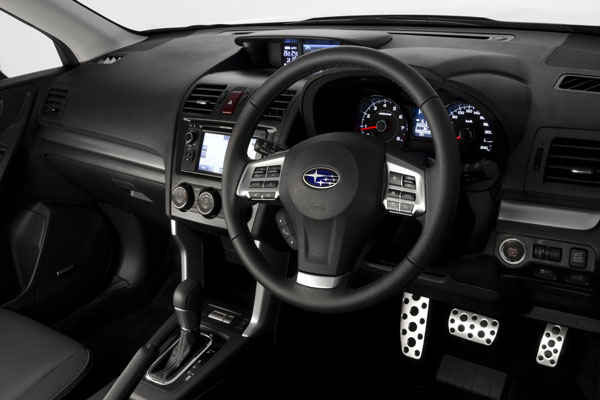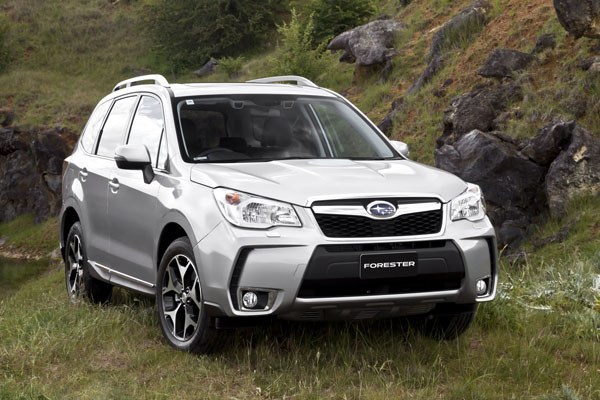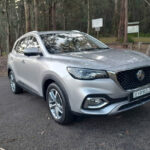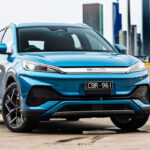From pirate treasure map to automobile designation, the letter ‘X’ marks the spot of something excitingly special. This is never truer than with the Forester XT, Subaru’s new high-performance mid-size SUV.
A best-seller since pioneering the high-performance SUV class in 1997, the latest Forester XT shows off an array of new features, technology and styling to stir Forester fans new and old.
At first, I had my doubts about the XT – a 2.0-litre petrol engine, albeit turbocharged, mated with a continuously variable transmission. Not the recipe for sprightly performance I thought.

How wrong can you be? New engine and transmission technology from Subaru manufacturer Fuji Heavy Industries has shifted the Forester performance up into what is almost a segment of its own.
The 2.0-litre horizontally opposed Boxer motor makes use of direct petrol injection to pump out 177 kW of power at 5600 rpm and 350 Nm of torque between 2400 and 3600 rpm, a 4.7 per cent power gain and 9.4 torque increase over its predecessor.
This is accompanied by a 19 per cent gain in fuel efficiency and 20.6 per cent improvement in emissions. Towing ability has also gone up by 12.5 per cent to 1800 kg for a trailer with brakes.

The engine is hooked up to a Lineartronic continuously variable transmission with six preset speeds when required. And Subaru’s symmetrical all-wheel drive system.
On the outside, the Forester XT has gone from an amenable compact all-wheel drive wagon 16 years ago to a mid-size SUV with substantial street presence from its bulked-up body.
Not that aerodynamics have suffered, with efficiency improved by 11 per cent over the previous unit, producing a co-efficient of drag of 0.33, thanks to such refinements as a guard underneath the engine bay and a rear spoiler.
Of further help is Forester’s narrower rear and lightweight aluminium bonnet, while the rear bumper corners were designed for aerodynamic efficiency, together with large underbody covers, including mudguards and air flaps.
A gripe with previous Foresters has been the limited vision from the driver’s seat because of its lack of height. Seats in the new XT have got over that. Set higher, together with the A-pillar shifted 200 mm further forward, taking the windscreen further from front-seat occupants, there’s more of a command position for the driver, while the blind spot is reduced by one degree.
The rush from zero to 100km/h can be done in an impressive 7.5 seconds. The test car pleasantly surprised with no ’slipping-clutch whine’ as with some CVTs, just a constant hum from the engine.
All Forester XTs are fitted with Subaru Intelligent-Drive (SI-Drive) which serves up engine and automatic transmission characteristics to suit various driving styles, preferences and conditions.
At the push of a button, one of three modes can be chosen: ‘Intelligent’ increases engine output more gradually for a smoother eco-friendly drive. It also makes for easier handling on snowy and slippery surfaces. Intelligent mode automatically activates on engine start-up.
In ‘Sport’ the engine accelerates in a linear fashion and long trips are ideal in this mode. Sport Sharp (S#, get it?) uses the engine to maximum potential, with a sensation of powerful acceleration. It makes use of an eight-speed gear pattern.
Each mode gives the driver the opportunity to experience a ‘different’ vehicle, from sedate to sporty, without having to apologise to passengers for a rough ride or dodgy handling.
To really get into it, however, the driver can add his or her own input. Using the steering wheel-mounted paddle shifts makes for a satisfying experience for those who want to do it their way, while passengers remain comfortable taking advantage of the extra elbow and shoulder room.
There should be no squabbling over cabin storage which is plentiful and versatile, as is the easily accessed rear cargo area which can take 422 litres of gear with rear seat back up and 1457 litres with it folded.
Putting occupants further at ease is vehicle dynamic stability control which constantly checks vehicle behavior, including the anti-lock brakes, engine and limited-slip differential via the traction control system.
VDC can use the engine and brakes to prevent side slip and achieve a high degree of stability and can be turned off allowing engine control and torque reduction to be cancelled when driving on snow and muddy surfaces.
‘Kid connectivity’ is well covered by USB, iPod and Bluetooth offering optimum vocal effect, richer bass tones by adding harmonics and a sound restorer that adds to the digital sound sources that get lost in music when compressed for iPod and MP3.
Forester 2.0 XT also includes reversing camera, electric sunroof, dual zone air-conditioning, multi-function display, 18-inch alloy wheels and silver roof rails, and is priced from $43,490 plus on-road costs.
AT A GLANCE
MODEL RANGE
Forester 2.0i manual $30,990 Forester 2.5i auto $32,990
Forester 2.0i-L manual $33,490
Forester 2.5i-L auto $35,990
Forester 2.5i-S auto $43,990
Forester 2.0 D manual $35,490 Forester 2.0 D-L manual $37,490 Forester 2.0 D-S manual $43,990
Forester 2.0 XT auto $43,490 Forester 2.0 XT Premium auto $50,490
Note: These prices do not include government or dealer delivery charges. Contact your local Subaru dealer for drive-away prices.
SPECIFICATIONS (Subaru Forester XT)
ENGINE
Type: 2.0-litre naturally aspirated
Cylinders: Four, horizontally opposed
Displacement: 1998 cc
Bore x stroke: 86.0 mm x 86.0 mm
Compression ratio: 10.6:1
Maximum power: 177 kW / 5600 rpm
Maximum torque: 350 Nm / 2400-3600 rpm
Cam-train system: Double overhead cam
Fuel system: Direct injection
DRIVELINE
Lineartronic Continuously Variable Transmission, with X-Mode all-wheel drive
DIMENSIONS, WEIGHT, CAPACITIES
Overall length: 4595 mm
Overall width: 1795 mm
Overall height: 1735 mm
Wheelbase: 2640 mm
Track: 1545 mm (front / 1550 mm (rear)
Minimum ground clearance: 220 mm
Tare mass: 1607 kg
Turning circle: 10.6 m kerb to kerb
Towing: 750 kg (unbraked); 1800 kg (braked)
Maximum tow ball download: 180 kg
Fuel tank capacity: 60 litres
Cargo capacity: 422 litres (rear seat back up), 1457 litres (rear seat back folded)
PERFORMANCE
Acceleration 0-100 km/h: 7.5 sec
FUEL CONSUMPTION AND EMISSIONS
7.0 litres / 100km; 197 g of CO2 per kilometre (combined cycle)
SUSPENSION AND BRAKES
Suspension: MacPherson independent strut type (front); independent double wishbone (rear)
Brakes: Vacuum assisted ventilated discs all round
Steering: Rack-and-pinion assist-type electric power
GREEN VEHICLE GUIDE
Greenhouse rating: 6.5 / 10
Air pollution rating: 7.5 / 10
STANDARD WARRANTY
Three years / unlimited kilometres












